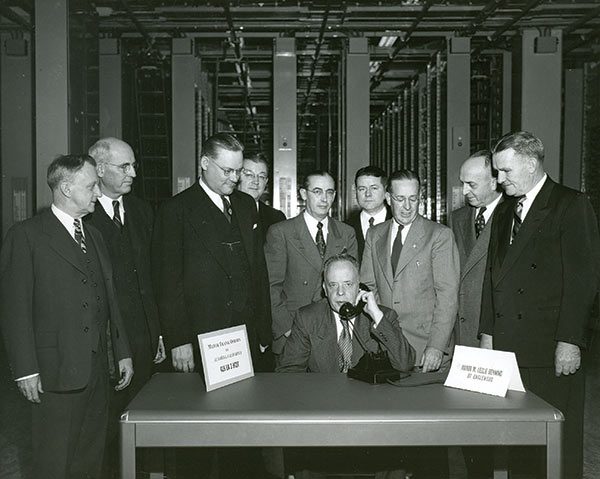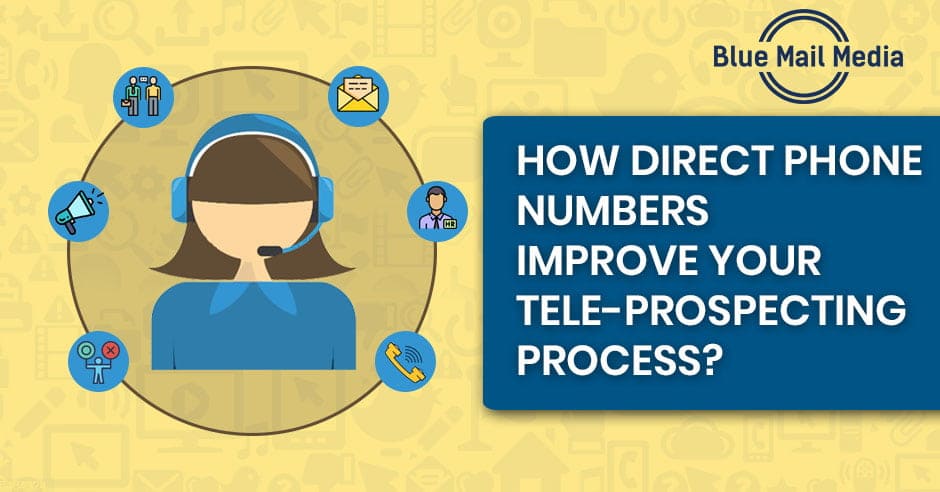Communication with the customers and the potential clients form an integral part of business success. Thankfully, direct phone numbers help you achieve the same by letting you connect with the people in a single shot. Direct business contacts are capable of alleviating any anxiety you have when it comes to calling your customers through a compound business line or a phone tree.
Simply put, these numbers allow calls to be directed straight to the required extension of a specific employee or department within an organization bypassing the operator. For instance, if a sales executive wants to talk to a product manager of a manufacturing unit, he can directly get connected to that particular individual instead of a receptionist diverting a call or pressing multiple buttons to reach him.
Direct business contacts are the easiest way to improve your connect rate, and therefore the competence of your sales process.
A Real-World Example – Direct Phone Numbers
60 years ago, in Jersey, the telecommunication services took a giant leap with the first direct phone call. On November 10, 1951, a call by the mayor of Englewood, M. Leslie Denning, generated huge attention after dialing ten digits on his black rotary phone. As seen in the picture below, there were nine men in suits from AT&T and Bell Labs listening in at his side.

Image Source: New Jersey Monthly [2011 October edition]
Frank Osborne, mayor of Alameda, California, who was about 3,000 miles away, picked up his ringing phone. The communications history was created with the completion of the first direct transcontinental phone call, as per the AT&T Tech Channel.
It consumed barely 18 seconds for Denning to make this first cross-country connection. However, in 1915, an early attempt for the transcontinental call from San Francisco to New York necessitated five operators and took 23 minutes to achieve. Even at those time, routine long-distance calls needed the intervention of an operator.
The director of the Telecom Management Program, Audrey Curtis, clearly describes its benefits as:
- Direct business numbers eliminate the costs of maintaining long-distance calls.
- It takes shorter holding times for positioning a call because of advanced automation.
- It incurs less amount if the call does not get completed due to a busy signal or no answer.
- The operator charges allied with conventional long-distance calls are excluded.
Why Your Business Needs Direct Line Numbers?
Today’s workforce is exceedingly using mobile to get in touch with anyone they wish to. And, if you have to go through switchboards to reach the desired prospect, you may find yourself in a tough state by merely talking to whomever you can talk to.
That is, you are truly fooling yourself by assuming the receptionist or the switchboard operator on the primary business line is willing to transfer your call to a high-level decision-maker. In a few lucky instances, you may get a direct extension for the contact, which can then be used in future attempts.
However, the downside here is the “call screening” from the switchboard operator. That is, the operator is responsible for determining which calls get through and which do not. They have all the power to filter out the unexpected calls.
You can avoid this screening by using a direct line number for the prospects.
How Direct Business Contact Helps You Reach Clients?
If the only means of reaching your prospect is through a direct line number, you may find yourself more confident while pitching your product or pushing them into the sales funnel. Other ways in which a direct inward dial number helps sales professional includes:
- Takes Less Time to Connect: It saves a lot of time as one can contact the person directly without any intervention of a mediator. The connect rate of the direct line number is 12 dials per prospect, whereas a switchboard takes 20 dials.
- Makes You More Productive: Direct numbers make connections faster and thereby increases the productivity of your sales team. You can invest less time finding contact information to reach decision-makers undeviatingly. This whooping connection rate, when combined with abridged research time, reduces the time required to acquire a lead by 87%.
- Saves A Lot of Money: As mentioned earlier in this blog, direct contact numbers save lots of money as one need not purchase multiple connections and multiple telephones. Also, it reduces the cost of lead acquisition by 150%, and the overall sales expenditure is reduced by 22%.
- Increased Customer Appreciation: This method of tele-prospecting receives higher customer appreciation as customers feel that they are provided with better services with direct contact. Apple’s over-the-phone customer support is a good example where the service representatives usually give away their direct dial numbers for the customers to avoid the switchboard if in case they wanted to follow up with their product issue or servicing.
Conclusion
Now we know that communication gets more effective using direct business contacts as no calls go unattended in this approach. It makes your sales team better at pitching products or digging pain points of individual customers. All in all, you will see a significant impact on your bottom line by investing in this mode of tele-prospecting. So, why wait? Get your prospect’s direct line number and improve the rate at which you get them on the phone!

